As we explore standalone episodes from horror and sci-fi anthologies, I will break down how The X-Files’ “Monster of the Week” episodes (separate from the show’s overarching mythology) often employed science fiction concepts that are grounded in scientific fact. This week, we’ll look at “Folie à Deux” (Season 5, Episode 19).
In “Folie à Deux,” a paranoid telemarketer is convinced that his boss is an insect-like monster disguised as a human who is slowly zombifying his work colleagues. He then takes his coworkers and boss hostage by gunpoint in hopes of revealing his boss’s monstrous identity. The telemarketer is killed by police during the hostage crisis, but not before Special Agent Fox Mulder (David Duchovny) also catches a glimpse of the insectoid monster that the telemarketer saw in his boss. In our exploration of the scientific grounding of this episode, we will focus on the psychological syndrome known as folie à deux, or shared psychosis, that inspired the episode. We will also revisit the scientific reality of parasitic manipulation.
Episode overview
Gary Lambert (Brian Markinson) is a vinyl siding telemarketing salesman in Oak Brook, Illinois. Ostensibly, Gary is a reserved but oddly nervous man. In the episode’s opener, we are privy to his unique visions of his boss, Greg Pincus (John Apicella). As Gary reads a script promoting vinyl siding to potential buyers through his headset, he is distracted by a bizarre insect chirruping noise. He becomes even more disturbed when the flickering image of a giant insectoid creature comes into view.
Cut to FBI Assistant Director Walter Skinner (Mitch Pileggi) assigning Agents Mulder and Dana Scully (Gillian Anderson) to the case. Gary’s company, VinylRight, has reported a chilling anonymous audio recording in which a man threatens violence against the company, claiming that a monster is harming VinylRight employees. Agent Mulder ships out to Illinois and interviews Greg Pincus about the aberrant message. He reassures Pincus about the message but suggests that the company increase security.
Mulder’s interest is piqued by the phrase “hiding in the light” that the caller uses. He telephones Scully and asks her to review the X-files and research documents with that phrase. Meanwhile, Gary’s female coworker, Nancy Aaronson, is summoned by intercom to Pincus’s office. Gary urges her not to go, but she brushes off his warning. When the office door closes behind her, she emits a shriek that only Gary Lambert seems to be able to hear. When she emerges, her face appears vacant and zombified from Gary’s point of view.
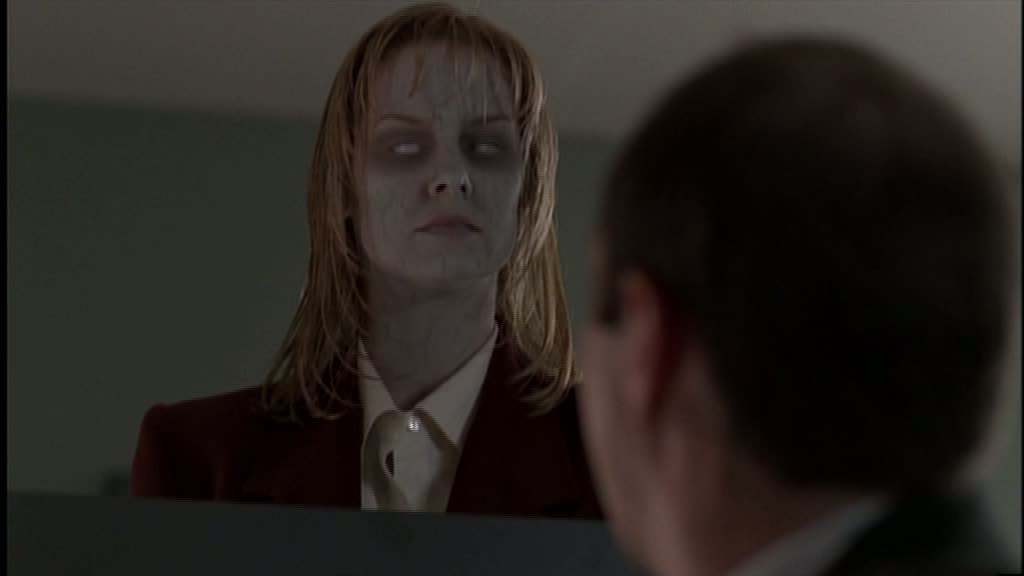
Scully calls Mulder back to report on her findings regarding the phrase “hiding in the light.” The same phrase was also used by the deranged deacon of a church in Florida who was convinced that one of the church parishioners was evil. One Sunday, he came to church and committed a mass shooting against the congregation. Mulder and Scully agree that she should fly to Illinois and assist in this now apparently serious case.
Mulder returns to the VinylRight company, only to find that the normally bustling office cubicles are all empty. Nancy appears from a hiding place and warns Mulder to take cover, but not before Gary Lambert appears, holding an assault rifle. He takes his boss and his coworkers as hostages. Gary makes it plain to everyone that he believes their boss, Greg Pincus, is a monster. He has isolated Pincus with other employees that he claims Pincus has zombified, including Nancy.
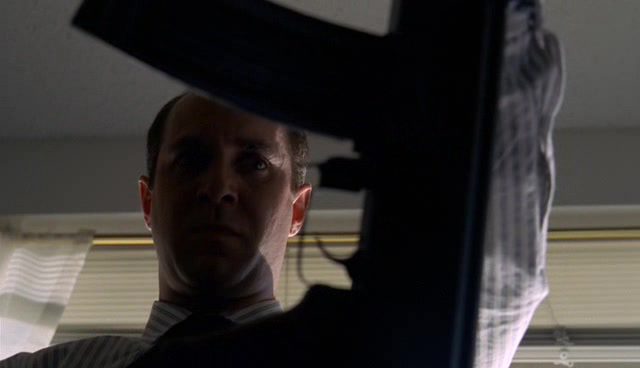
Scully then arrives in Oak Brook to find FBI and SWAT team members negotiating what has quickly escalated into a hostage crisis. Against Scully’s wishes, a SWAT team member calls Mulder’s cell phone, blowing his cover. Gary Lambert becomes distressed when he learns that Mulder—who had been posing as a job applicant—is an FBI agent, and he knocks Mulder over the head with the butt of his gun. A different hostage attempts to overpower Gary, but Gary shoots and kills him.
Now that Gary knows Mulder’s identity and has access to his phone, he begins negotiating with law enforcement. He demands a television crew to come in and produce a live broadcast of the event. Gary’s hope is to expose Pincus as an insectoid monster to the public. The FBI sends in a camera crew in to broadcast on a closed-circuit system, fooling him into thinking they are broadcasting live on the local news station.
Gary addresses the camera, and tells everyone to look at Pincus, at “it.” The power shuts off, and in the dark, Mulder can see a monster where Pincus had just been standing. Suddenly, an armored tank breaks through the wall, and a SWAT team member shoots and kills Gary. Before he dies, Gary acknowledges to Mulder that now Mulder has seen the monster, too. Indeed, Mulder now begins to investigate the case with credence to Gary’s delusions. He traces this case to five previous X-files cases that involve monsters that only one person could see. Scully is dismayed when she learns that Mulder wants to validate Gary’s claims, and she attributes his vision of the monster to folie à deux.
Mulder then begins following Greg Pincus. He follows Pincus to the home of Gretchen Starns, another VinylRight employee. Mulder peers into her house through a window and sees the insectoid monster stalking the unsuspecting Gretchen in her home. He notices that the monster is trying to place its insect pinchers on the back of Gretchen’s neck. She screams, and Mulder breaks in. He finds the monster crawling all over the walls and ceiling of the house.
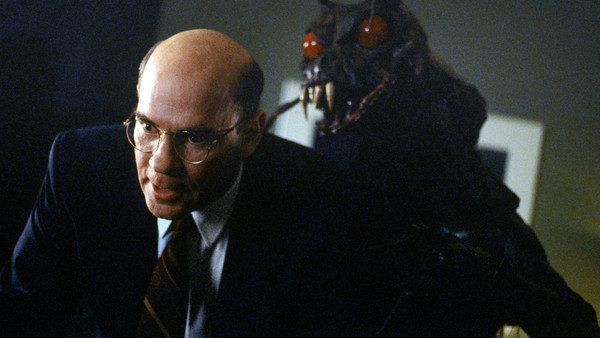
Gretchen files a complaint with the FBI, accusing Mulder of breaking into her home. While Assistant Director Skinner is grilling Mulder about his unorthodoxy and unlawfulness, Mulder sees Pincus in monster form, advancing menacingly to Skinner. Mulder draws his weapon, but Skinner, reasonably believing that Mulder has fully lost it, overpowers him. Mulder is admitted into a psychiatric institution. Later, at Mulder’s insistence, Scully examines the back of the dead hostage’s neck for insect bite wounds. Astonishingly, she finds tiny puncture marks in a bite pattern.
Back at the hospital, Mulder is restrained to his bed and is terrified by seeing the insectoid monster’s silhouetted form outside his window. Mulder calls to the nurse for assistance, but as it turns out, she has also been zombified by the monster and will do its bidding. She leaves the window open and leaves the room. At the same time, Scully arrives at the hospital and herself sees the zombified form of the nurse. She gets to Mulder’s room and discovers the monster crawling on the ceiling. She shoots at it, but it escapes.
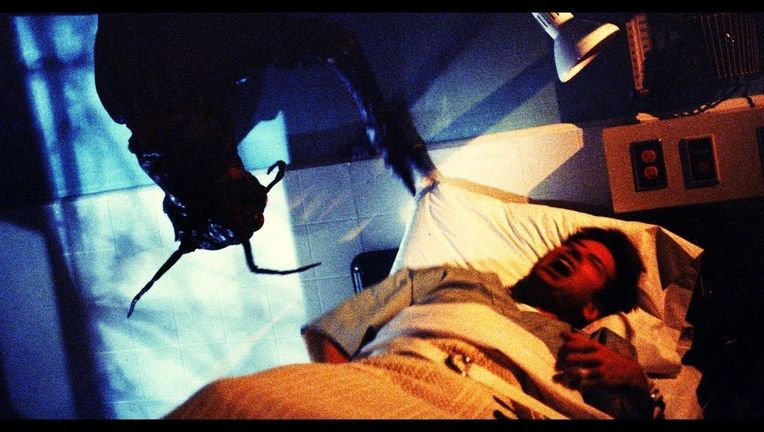
Later, Scully has a meeting with Skinner, who is dumbfounded that Scully is now essentially corroborating Mulder’s outlandish claims. She does everything she can to substantiate Mulder’s claims without actually admitting that she has also seen the insectoid monster. She reports that an unidentified toxin was found in the dead hostage’s corpse, that Pincus has disappeared without a trace, along with the nurse from the psych ward and several VinylRight employees. Mulder returns to work after a brief recovery period, and Scully informs him that she told Skinner the truth about what happened: the incident can only be explained officially as a case of folie à deux.
Folie à deux: Shared psychosis
When we looked at the scientific grounding for mob mentality in “Syzygy,” we explored the sociological phenomenon of collective behavior and the condition of epidemic hysteria, or mass psychogenic illness. With mass psychogenic illness, a group of people starts to believe that they are suffering from a viral physical condition without any corresponding physical cause. Essentially, people convince themselves that they are suffering from an imaginary epidemic illness. In a similar way, folie à deux occurs when a psychotic delusion is literally transferred from one person to another.
Clinical terms for folie à deux include Shared Psychotic Disorder (DSM—IV–297.3), Shared Psychosis, and Shared Delusional Disorder. From the French, folie à deux literally means “madness for two.” It occurs when symptoms of delusional belief, sometimes accompanied by hallucinations, are transmitted from one person to another. The syndrome usually occurs between two isolated people in long-term, intimate relationships. Typically, the person suffering original delusions is a more dominant personality, while the person who has delusions transferred to them is more passive.
Frighteningly, the exact causes of Shared Psychiatric Disorder are not known, but they are associated with stress and preexisting mental illnesses. Nor is the phenomenon limited to only two experiencers. If there are three, four, or five people suffering delusions, then the condition is respectively referred to in common parlance as folie à trois, folie à quatre, folie à cinq, etc. The syndrome encompasses any type of delusional beliefs, and is not limited to such bizarre conditions as hallucinating that your boss is an insectoid monster. In one popular case study, a woman became convinced that her relatives were poisoning her food and water. Her delusion was eventually transmitted to her adult daughter and as a result they severely malnourished themselves and the woman’s small son.
One known case of folie à trois involved shared delusions between sisters. This case proves the tendency for folie à deux to occur between people with long-term, intimate relationships. Folie à trois occurred in South Carolina between three biological sisters, aged 21–23, who were eventually able to successfully plea for the insanity defense in court for their various crimes that resulted from their delusions. Their lives became unhealthily enmeshed 18 months prior to their inappropriate behavior. The sisters became convinced that their mother wanted to harm one of the sisters’ three children, and they also believed that God was communicating directly to them. They believed that God would direct them to houses where they could live together.
So, with the one sister’s three children, they went around town in their pajamas, first knocking on doors and asking if their rooms were ready, then breaking windows attempting to forcibly enter the houses. They eventually resisted arrest and were charged with burglary, assault and battery with intent to kill, among other things. At the jail, they were placed in the same cell, where they stripped naked and performed mystical Christian rituals. They became extremely violent with any officers who attempted to enter the cell or communicate with them, and it took the police 15 hours to restrain them.
That is only one extremely bizarre recorded incidence of folie à deux. If you are interested in finding more disturbing cases of folie à deux, then check out this Listverse listicle on “10 Highly Unusual Examples of Folie À Deux….” The “shared psychosis” experienced by Gary Lambert, Fox Mulder, and Dana Scully is, however, proven within the X-Files universe to not be a delusional experience, at all. Given the evidence that Scully collects at the end of the episode, the viewer is to believe that Greg Pincus is an actual insectoid monster. Not only is there unsubstantiated proof that Pincus is a monster, but evidence also suggests that he injects his insect venom into the back of his victim’s necks, compelling them to submit to his will.
Let’s revisit parasitic manipulation
In our previous discussion of X-Files episode “Ice,” we examined recent scientific discoveries about the mind-control capabilities of parasites. Now-proven scientific theories reveal that parasites can infiltrate the neural command centers of a host organism’s brain to manipulate its behavior in ways that are often fatal to the host. Actually, Pincus’s parasitic method of injecting venom into his prey’s spinal column to zombify them is very similar to the technique perfected by the Emerald cockroach wasp (Ampulex compressa). Terrifyingly, the Emerald cockroach wasp enlists its prey, the familiar American cockroach (Periplaneta Americana), to submit to being a food supply for developing larvae.
First, the wasp stings the cockroach to immobilize it. Next, she amazingly performs highly complex brain surgery on the cockroach. She injects what scientists like to call a “cocktail of neurotoxins” into a specific area of the roach’s neural center that effectively manipulates his behavior. After receiving this deadly injection, the roach can move but is unable to initiate its own movement. The cockroach has then been zombified, in the classical sense of the term. She then grabs the cockroach’s antenna and walks it back to her nest “like a dog on a leash,” according to Frederic Libersat of Ben-Gurion University of Negev in Israel. From there, she lays her eggs in his body where the larvae eventually pupate after eight days and then devour the roach’s body. (Never before learning of this horrifying procedure did I have sympathy for cockroaches.)
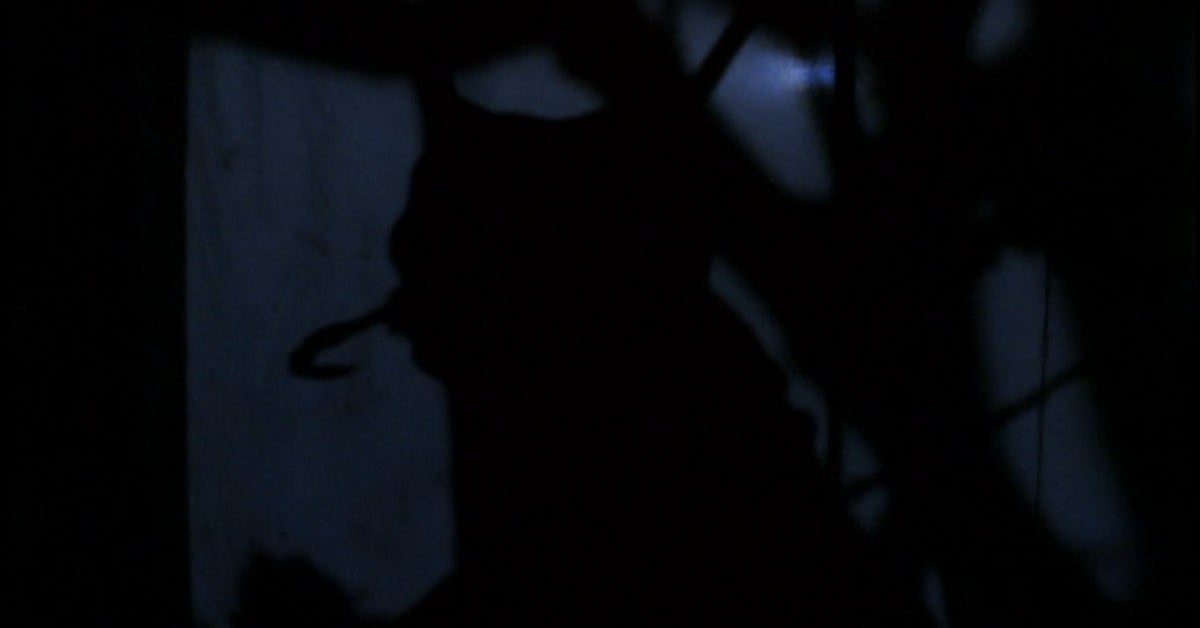
This parasitic…ahem, relationship is but one of the many types of transactions that occur between parasitic organisms and their hosts. It is like the Greg Pincus insectoid monster’s method of subduing and controlling his hosts. The technique of injecting a neurotoxin into a host to effectively zombify the host is one that does occur in nature. Do I or entomologists believe that insectoid monsters can disguise themselves as humans, infiltrate companies, and prey upon unsuspecting employees? No. But it is staggering to consider the potential impact that parasites may have on human life and behavior.
Kathleen McAuliffe, in her book This Is Your Brain on Parasites: How Tiny Creatures Manipulate Our Behavior and Shape Society, posits scientific grounding for the theory that parasites may deliberately manipulate human beings’ behavior and perceptions in ways that we cannot truly comprehend or even recognize. Even more shockingly, McAuliffe shares the theory that parasites have played a direct role in the rising and falling of human civilizations. Like Greg Pincus, they hide in plain sight.


This episode is currently on BBC America in the US